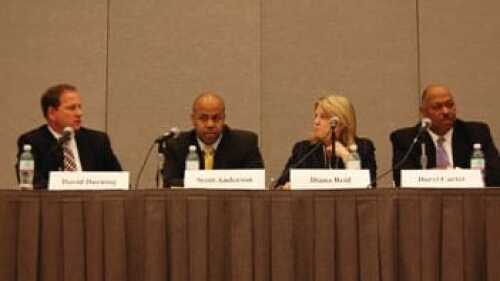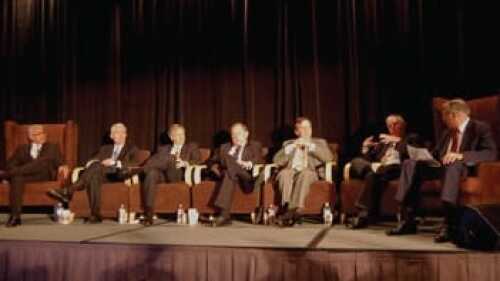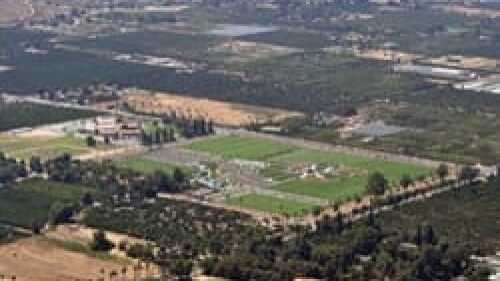Fall Meeting
It was pretty much business as usual at a panel discussion entitled “Public/Private Partnerships: Solutions for the Next Generation” at ULI’s 2011 Fall Meeting in Los Angeles—master plans, local politicians decrying their tight budgets, pay-as-you-go infrastructure takedowns. Business as usual, that is, until a veteran developer veered wildly off script and divulged some home truths, followed by advice for best approaching these partnerships and ensuring success.
In light of predictions of the death of government-sponsored enterprises (GSEs), panelists at ULI’s Fall Meeting were asked to predict what they thought might replace the business currently handled by GSEs like Fannie Mae and Freddie Mac, and what impact that shift might have for the market. Read more to learn what industry insiders expect to see happen with the GSEs over the next two to five years.
At the ULI 2011 Fall Meeting, a panel of real estate experts reported some good news: The U.S. economy has rebounded, and there are few signs at present of a double-dip recession. Nonetheless, there are clear signs of stagnation and underperformance, growth has been uneven, and the European debt crisis and the politically uncertain environment still threaten the economic recovery.
Local food is a hot topic. From community gardens that provide healthy food and a place for neighbors to meet, to resorts and tourist attractions that feature regular farmers markets and restaurants with farm-to-table dinners, the popularity of food and its source is driving real estate development in not-so-subtle ways. Read more to learn what some developers are doing to capitalize on this trend.
Despite the deepest economic recession since the 1930s, small-scale entrepreneurs are finding creative ways to develop and finance both commercial and residential real estate projects—and occasionally even make money. Find out what two such entrepreneurs told the audience at a recent ULI 2011 Fall Meeting session titled “Small-Scale Development: Entrepreneurship in the Post–Credit Crunch World.”
A new ULI report, “What’s Next? Real Estate in the New Economy,” highlights a number of trends poised to alter urban planning, design, and development through 2020. The report covers six major categories—Work, Live, Connect, Renew, Move, and Invest—and reflects the input, insight, and participation of ULI trustees, members, and staff.
Uncertainty about the fate of the euro, and whether some of the continent’s weaker economies will be able to maintain it as their currency, is already an impediment to investment, said one panelist at a session on the implications of the debt crisis for Europe at ULI’s Fall Meeting. Read more to learn why the European sovereign debt problem is seen as being as serious as 2008’s financial crisis.
The southern California real estate and development scene may be showing signs of life, with a renewed focus on infrastructure and the underlying attractiveness of the area to new residents providing some of the bright spots. Read about two sectors that are ripe for development, and what industry leaders see as a particular driver for future growth.
The ULI Los Angeles Transit-Oriented Development (TOD) Summit 2011 was held in early June in Pasadena, California. Read how rail transit is rejoining buses and cars as part of the state’s overall transportation mix, and how TOD projects at rail stations like those in Pasadena are setting the stage for a new pattern of denser, more walkable development that also helps cut greenhouse gas emissions.
Arlington Heights Sports Park, a new 35-acre (14-ha) public venue for sports and a community amenity in Riverside, California, shows how innovative approaches to project delivery can yield positive results. Read about the advantages a design/build process brought to the project, and the special considerations that must be addressed when designing a field to accommodate several sports.






